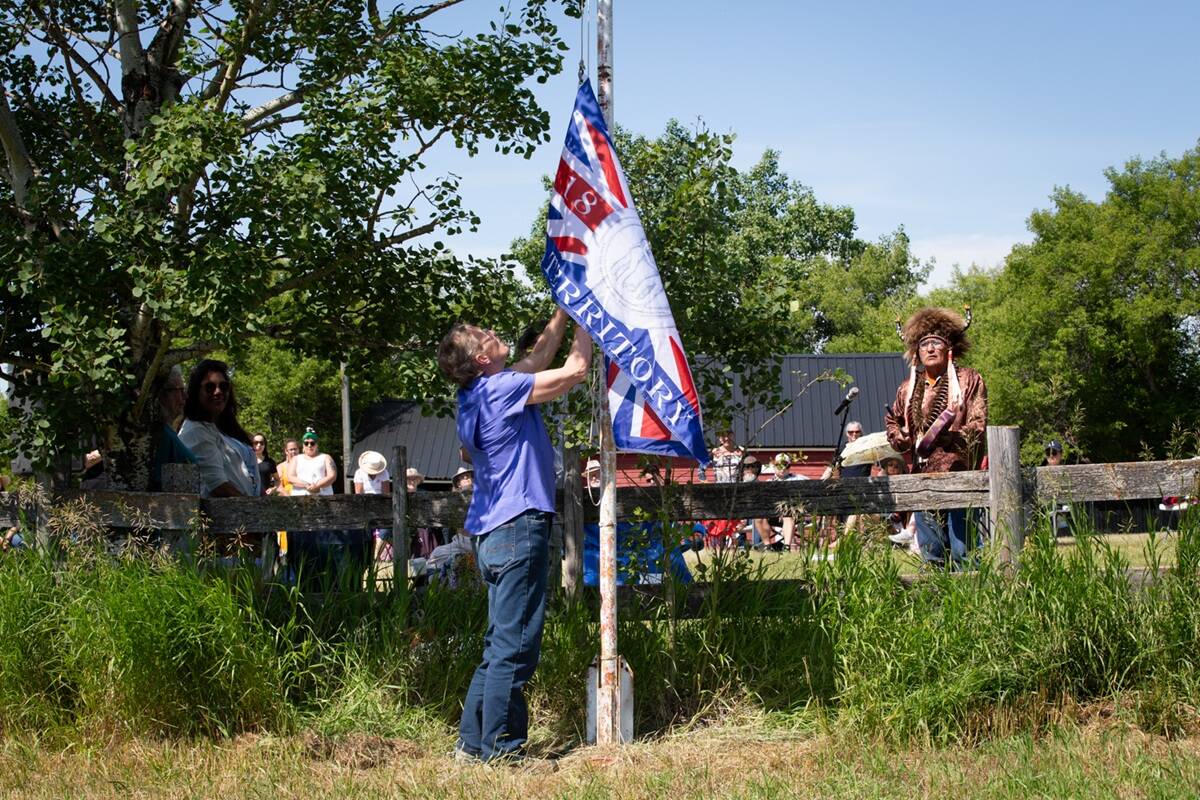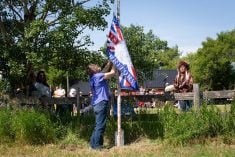Two brand new feed barley varieties bred by researchers at the Alberta Field Crop Development Centre (FCDC) in Lacombe were featured at the field day there this past summer. Chigwell, a six-row variety licensed to SeCan, and a yet-unnamed two-row variety to be released in January, will undergo seed multiplication in 2009 and 2010 and should be commercially available in 2010. In the meantime, decent growing conditions throughout most of Alberta this past summer have secured the seed supply for two other up-and-comers, Sundre and CDC Cowboy.
Sundre
Sundre is a husky six-row, smooth-awned barley bred at the FCDC in Lacombe that became commercially available in 2008. It was registered in 2005 and released for distribution to Mastin Seeds of Sundre, Alta.
Read Also

Treaty Land Sharing Network expands reach in Saskatchewan and Alberta
The Treaty Land Sharing Network, which connects land holders with First Nations and Metis people, has expanded since it began in 2018
Owner Bob Mastin had proposed a concept for a low-cost distribution system that caught the attention of the breeders. With low levies and high yields of a single variety to reduce per-bushel costs, seed growers in his network are making every effort to keep the price for this new variety in line with popular older varieties. He expects this will encourage producers to take advantage of purchasing new seed from professional seed growers each year, rather than saving their own seed.
Dave Solverson at Camrose is a beef producer and Sundre grower. He chose to grow Sundre for the first time in 2008 because of its high yield and smooth awn, which is important for silage production. He was in a pocket of drought last summer with just-in-time showers for the crops. Even at that, he was happy with his Sundre barley yields of about 80 bushels per acre on newly broken sod and about 105 bushels on clover stubble. The crop did lodge a bit in the moist areas, which he figures may have been due to fairly high fertility in the field. He sowed the crop with 50 pounds of nitrogen per acre, however, the field had received an application of manure the previous year. He plans to plant most of his barley acres to Sundre in 2009 and will have seed for sale.
At Bowden, Gary Anderson faced a challenging growing season. The wet spring delayed seeding, then a shifty August frost touched two fields of feed barley. Here he harvested in the neighbourhood of 80 to 90 bushels per acre, but it really nipped the test weight, which came in at about 44 pounds per bushel. Of the two fields that didn’t get touched by frost, the poorest went 105 to 110 bushels per acre and the other went 115 to 120 bushels per acre. The test weight on these fields was 53 pounds per bushel, the same as his Vivar, which yielded about 90 bushels per acre. The highest yield was on a field that he had fertilized more heavily with the intention of planting CPS wheat. Even though the crop went down, he says it wasn’t too hard to swath because of the heavy stand. The sensational plant growth would make Sundre an excellent choice for silage, he adds.
Dale Witdouck is a seed grower at Iron Springs in southern Alberta. He















